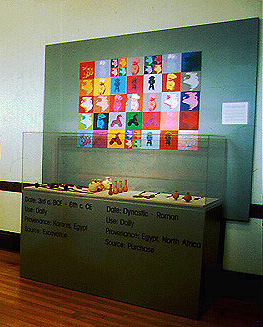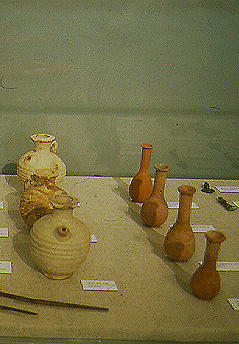Clas·si·fi·ca·tion
1. Act of classifying; act of distributing into groups;
act of assigning to a proper class.
2. The result of classifying; a system of classes or groups.

Clas·si·fi·ca·tion
1. Act of classifying; act of distributing into groups;
act of assigning to a proper class.
|
 |
Objects must be classified and grouped in order to be studied. For example, looking at similarities in the shape, material, and design of objects helps establish their origin, function, and evolution.
At the same time, modern classifications impose limits on how an object is seen and understood. Systematic orderings can mask the unique history of each object.

The Kelsey Museum has at least 8158 pots, about 4600 figurines, and more
than 927 amulets.
The objects in this case are organized by shape, material, date, use, and
source. What do these categories explain? What do they obscure?
 |
|
Classification is a process by which we group objects together in order
to understand them. It imposes order on chaos. Order is necessary. Order
is artificial.
How can this tension be resolved?
| Pot vs. Vase | Go Back | Directory | Classification |